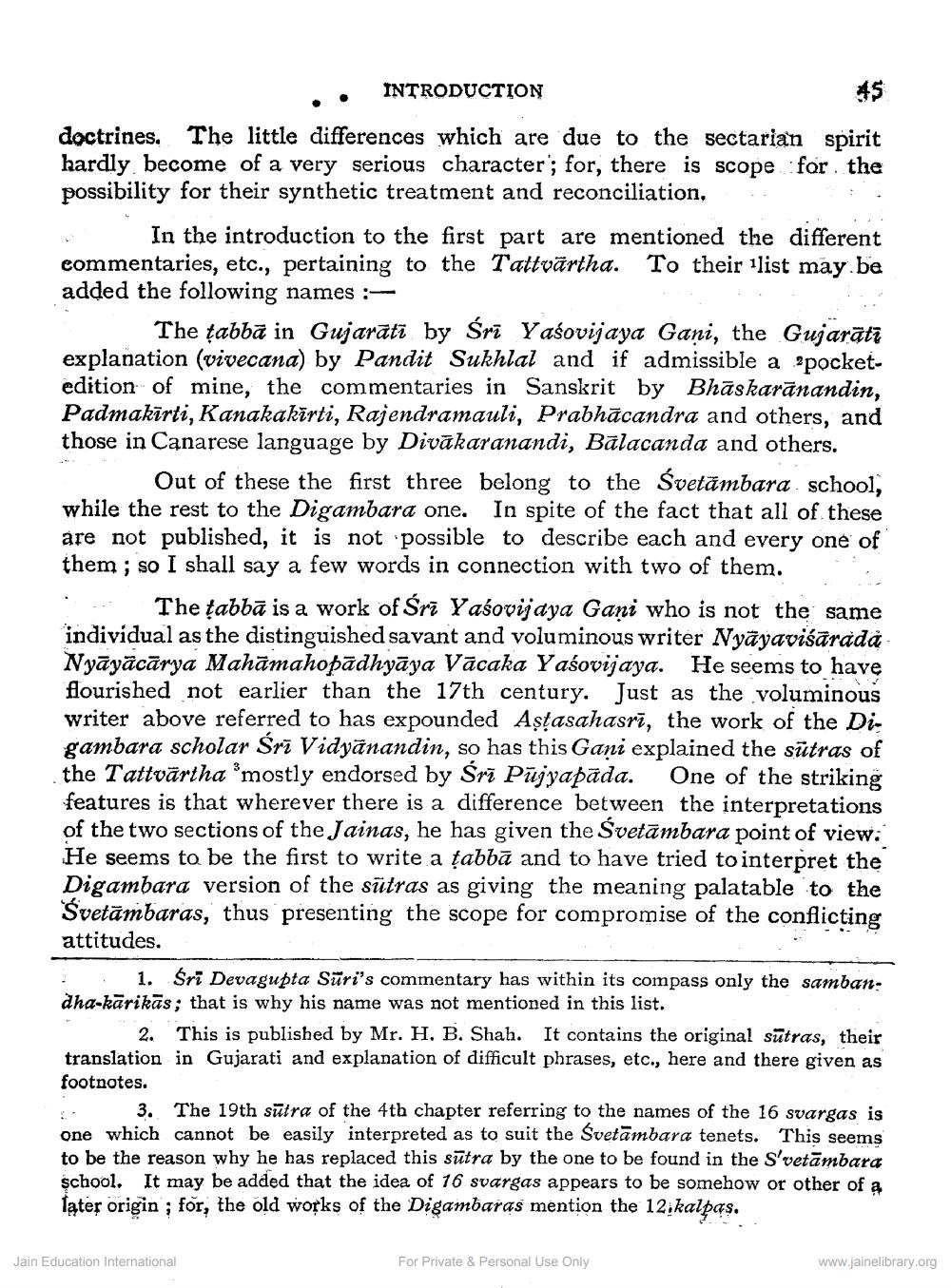________________
INTRODUCTION
45
doctrines. The little differences which are due to the sectarian spirit hardly become of a very serious character; for, there is scope for the possibility for their synthetic treatment and reconciliation,
In the introduction to the first part are mentioned the different commentaries, etc., pertaining to the Tattvärtha. To their list may be added the following names :
The tabba in Gujarati by Śrī Yasovijaya Gani, the Gujarati explanation (vivecana) by Pandit Sukhlal and if admissible a 2pocketedition of mine, the commentaries in Sanskrit by Bhaskaranandin, Padmakirti, Kanakakīrti, Rajendramauli, Prabhācandra and others, and those in Canarese language by Divakaranandi, Balacanda and others.
Out of these the first three belong to the Svetambara school, while the rest to the Digambara one. In spite of the fact that all of these are not published, it is not possible to describe each and every one of them; so I shall say a few words in connection with two of them.
The tabba is a work of Sri Yasovijaya Gani who is not the same individual as the distinguished savant and voluminous writer Nyayaviśārada Nyāyācārya Mahāmahopadhyāya Vācaka Yaśovijaya. He seems to have flourished not earlier than the 17th century. Just as the voluminous writer above referred to has expounded Aṣṭasahasri, the work of the Digambara scholar Sri Vidyanandin, so has this Gani explained the sutras of the Tattvärtha mostly endorsed by Sri Pujyapada. One of the striking features is that wherever there is a difference between the interpretations of the two sections of the Jainas, he has given the Svetambara point of view. He seems to be the first to write a ṭabba and to have tried to interpret the Digambara version of the sutras as giving the meaning palatable to the Svetambaras, thus presenting the scope for compromise of the conflicting
attitudes.
1. Sri Devagupta Suri's commentary has within its compass only the sambandha-karikas; that is why his name was not mentioned in this list.
2. This is published by Mr. H. B. Shah. It contains the original sutras, their translation in Gujarati and explanation of difficult phrases, etc., here and there given as footnotes.
3. The 19th sutra of the 4th chapter referring to the names of the 16 svargas is one which cannot be easily interpreted as to suit the Svetambara tenets. This seems to be the reason why he has replaced this sutra by the one to be found in the S'vetambara school. It may be added that the idea of 16 svargas appears to be somehow or other of a later origin; for, the old works of the Digambaras mention the 12 kalpas.
Jain Education International
For Private & Personal Use Only
www.jainelibrary.org




